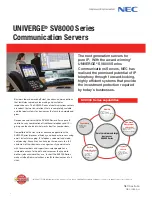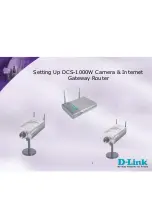
Windows ACLs
Chapter 6 Share and File Access
107
Home directories are supported for SMB, NFS, AFP, HTTP/HTTPS, and FTP/FTPS.
They are accessed by clients in the following manner:
• For SMB, AFP, and HTTP/HTTPS, users are presented with a virtual share
named after the username. The virtual share is visible and accessible only to the
user. Users are not limited only to their virtual shares; all other shares on the
server continue to be accessible in the usual fashion.
• For NFS, the home directory is exported. When a user mounts the home directory
root, all home directories will be visible inside the root, but the user’s home
directory will be accessible only by the user and the administrator.
Note
If desired, UNIX clients can be configured to use a Snap Home Directory as
the local user’s system home directory. Configure the client to mount the home
directory root for all users, and then configure each user account on the client to
use the user-specific directory on the SnapServer as the user’s home directory.
• For FTP/FTPS, local users will automatically be placed in their private home
directory when they log in. Access to the home directory is facilitated through a
share pointing to a parent directory of the home directory, so users can still
change to the top-level directory to access other shares.
If ID Mapping is enabled, domain users and local users mapped to the same user
will be directed to the domain user’s home directory. In some cases, data in the
local user's home directory will be copied to the domain user's home directory:
• If a local user home directory accumulates files before the local and domain users
are mapped, and if the domain user's home directory is empty, the local user's
files will be copied to the domain user's home directory the first time the local
user connects after the users are mapped.
• If both the local and domain user home directories accumulate files before the
local and domain users are mapped, the files in the local user's home directory
will not be copied to the domain user's home directory.
Windows ACLs
Introduced in v5.0, GuardianOS now fully supports Windows NTFS-style file
system ACLs, including configuration, enforcement, and inheritance models. Inside
Windows/Mixed SnapTrees, files created and managed by Windows clients have
the Windows security personality and behave just as they would on a Windows
server. Clients can use the standard Windows NT, 2000, 2003, XP, Vista or Windows
7 interface to set directory and file permissions for local and Windows domain users
and groups on the SnapServer.
Permissions are enforced for the specified users in the same manner for all client
protocols, including non-SMB clients that normally have the UNIX security
personality. However, if a non-SMB client changes permissions or ownership on a
Summary of Contents for 5325301507 - Snap Server 4400 NAS
Page 2: ......
Page 12: ...xii SnapServer Administrator Guide ...
Page 16: ...xvi SnapServer Administrator Guide ...
Page 58: ...Print Server 42 SnapServer Administrator Guide ...
Page 64: ...NIS Domain 48 SnapServer Administrator Guide ...
Page 110: ...Configuring VSS VDS for iSCSI Disks 94 SnapServer Administrator Guide ...
Page 154: ...Log View 138 SnapServer Administrator Guide ...
Page 228: ...Phone Home Support 212 SnapServer Administrator Guide ...
















































